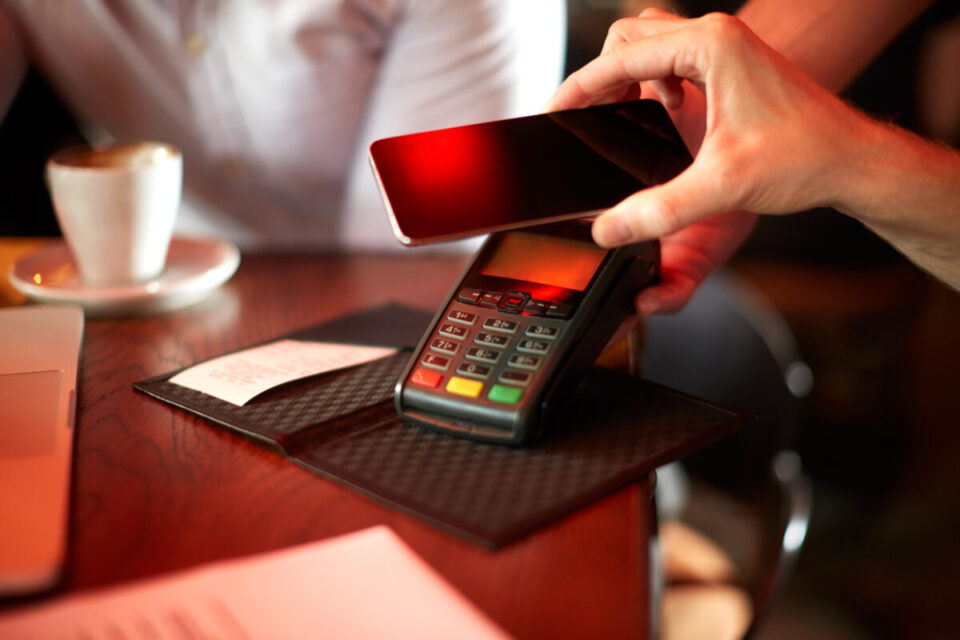One of the constant trends we have seen during the Covid-19 pandemic has been the shift to cashless payments, using cards, contactless and digital wallets to make purchases instead.

Alexis Zukierman is the business development manager at intive, a company that helps its customers transform their businesses by designing and engineering people-centric digital products. Here he shares his thoughts on how the user experience (UX) is helping to sustain the shift towards e-wallets.
Money is not a static concept – how we manage it and pay with it has changed dramatically over the years. In the Covid-19 crisis where concerns over physical cash, financial inclusion, and social distancing are rife, people are turning to e-wallets. However, providers are having to finesse the user experience (UX) to ensure long-term adoption across all user segments.
E-wallets (also known as a ‘digital wallet’) are a device, software or service that allows electronic transactions. An e-wallet links to a person’s bank account, where it can either be directly integrated with funds (like Google Pay, Samsung Pay, and Apple Pay) or loaded with set amounts of money (like Paypal, Revolut, and Venmo).
With e-wallets becoming commonplace at check-outs around the world, here’s how providers are optimising the UX:
Faster, simpler payments
Friction at the checkout stage is a major pain point for people who shop using their mobile device, and is a leading cause of mobile cart abandonment. In response, e-wallets streamline and speed-up checkout processes for users by removing the need to manually enter details. For example, Venmo allows users to pay with their phones and only takes a few steps (taps and events) to complete a payment.
The process of logging on or registering an e-wallet is equally as smooth. Biometrics grant users access to their wallet in a matter of seconds based on unique biological characteristics such as their face, fingerprint or iris. Not only are biometrics secure – the FBI and Department of Homeland Security use the technology – e-wallet users don’t have to remember multiple passwords for different accounts. For example, Apple Pay incorporates touch ID on phones to make purchasing goods as convenient as holding a button.
This ease of finalising transactions with one touch may be unfamiliar to less tech-literate users, however, it is set to be the norm among digital payments, not the exception. In the meantime, e-wallets are also compatible with QR codes – which have been increasingly popular during the pandemic. Users can scan a code with their phone camera, which automatically opens the e-wallet login page and leads to a payment flow with pre-loaded details. Some e-wallets also display a photo of the storefront to confirm that users are paying the right vendor. For non-technical users, the QR codes are an effective way to connect the offline and online world, and transition into digital payment platforms.
Bridging the gap from physical to digital
Many people believe that payments completed with e-wallets are safer than those done with cash or credit cards, yet some user segments have been cautious about e-wallet adoption.
To accommodate the shift, e-wallets’ UX has been designed to store digital versions of people’s physical debit and credit cards. By visualising the items that people are already familiar with, e-wallets are easier to understand and navigate. Some providers are going a step further and offering membership and loyalty cards in their e-wallets, so users can store accumulated points and discounts they earn while shopping. Samsung Pay has even gamified its UX to give users coupons and savings for actions like making a set number of transactions or sharing content on social media.
This type of design makes e-wallets a more literal version of a traditional wallet that people would carry with them. It also engages users more by establishing a ‘play-and-reward’ structure that makes the technology less intimidating for different segments.
On the security side of things, e-wallets’ UX places strong emphasis on reassuring users that biometric logins and digital payments are protected. The majority of providers opt to have concise and informative copy that clearly directs users through short pathways so that processes are digestible. In particular, e-wallets’ onboarding has educational messaging that is triggered by specific events like registering a new payee. Some brands actually choose to mirror terminology and design from in-person banks to reinforce that they are just as trustworthy.
That said, there is still progress to be made to persuade users that e-wallets are robust. The Department of Homeland Security recently invited designers to submit designs for its e-wallet that will ‘instil confidence in [users …] that their online interactions are secure.’ No doubt, the submissions will lead to further innovations in UX across the spectrum of e-wallets.
Modern user-centric features
Designing with the user in mind is the first rule of UX, and e-wallets are striking the balance between being formal and instructive, alongside being accessible and fun.
Venmo’s functionality is mostly intended for generations who have grown up with social media and are accustomed to posting their daily activity online. The e-wallet has a private social and public global feed where users can broadcast their transactions (without the amount shown), and users are encouraged to add emojis to their payment messages. Not to mention, users can search for fellow Venmo contacts by their username, phone number or Facebook account.
By constructing a user experience that echoes that of social media, e-wallets are tapping into existing user behaviours and transforming a typically mundane banking experience into a fun, exciting one.
Perhaps the most appealing e-wallet feature is the ability to split payment amounts between multiple people and request money. This service provides real value to all types of users who have had to undergo the hassle of splitting a bill. Optical Character Recognition (OCR) technology within e-wallets enables users to scan receipts and drag items and their total cost to other people’s accounts where they can make a direct payment. Especially against the backdrop of Covid-19, where merchants and customers alike are less willing to handle cash, this functionality is not only valuable, it’s necessary.
UX is essentially what shapes trust between users and unfamiliar technology, so it has to continue evolving as user behaviours and expectations do. As e-wallets become a standard place for payments, UX can facilitate positive, meaningful user interactions that see people return, engage, and promote digital payment platforms in an organic way.
After all, UX is the defining factor between a good wallet and a great one.



